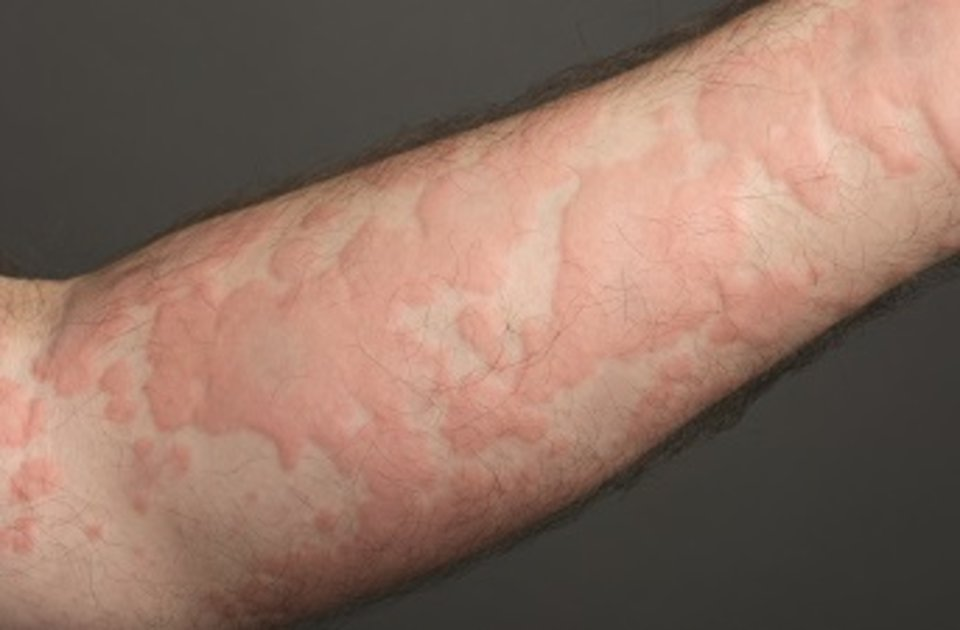Understanding Contact Dermatitis
What is contact dermatitis?
Contact dermatitis refers to a type of eczema/dermatitis which develops as a result of our skin coming into direct contact with a chemical agent or substance.
There are two main types of contact dermatitis:
1. Irritant contact dermatitis
This refers to skin inflammation which develops after the skin comes into contact with certain substances that irritate the skin, like acids, alkali, detergents, thinners and oils. Most, if not all individuals will develop this skin reaction if they come into contact with these substances when present at very high concentration or when they handle these substances without proper protection,like wearing gloves. Some people are more prone to this skin condition.
An example of an acute form of irritant contact dermatitis is burns from undiluted acid. A good example of the chronic form of irritant contact dermatitis is dermatitis seen on the hands of a housewife who does her daily household chores without wearing proper protective gloves.
2. Allergic contact dermatitis
This refers to eczema that develops in certain persons when their skin comes into contact with things like cosmetics, perfumes and costume jewellery to name a few. In other words, these persons have become sensitive or allergic to these otherwise harmless substances. They may have been able to use or handle these substances without any problem previously but later develop rashes whenever they come into contact with them. Examples of common substances that can cause this reaction include metals (nickel in costume jewellery ear studs and wrist watches), perfumes, hair dyes, cosmetics, rubber products and topical medications. A rash on the earlobes of ladies can be due to an allergic reaction to cheap nickel containing jewellery.
What does contact dermatitis look like?
It looks like any other kind of eczema except that the rash is usually confined to areas in contact with the chemical substance which has caused the reaction. In severe reactions, the rashes may extend to other areas that were not in direct contact with the substance.
Are tests needed to make the diagnosis?
The doctor will take a detailed history that includes noting down the substances that the patient has been handling before the appearance of the rash and whether the patient had previously developed rashes after handling certain items. Other useful points include information on the home and work environment, living conditions, habits and hobbies. This will be followed by a detailed physical examination of the affected skin and the adjacent areas.
Patch testing is a useful test to find out which substance the patient is allergic to. The principle of the test is simple, which is basically reproducing the same skin reaction on the patient with several suspected offending substances that may have caused the rash. However, this is not a test for food allergy. Common items tested include fragrances, medications, metals, preservatives in skin care products, rubber chemicals and substances handled at work. Pieces of tapes coated with various substances diluted in the proper concentration are applied to the back of the patient. The patient is advised to keep the back dry and to avoid strenuous activities that can cause excessive sweating. The patches are removed after 48 hours and the patient then returns to the doctor’s office for an assessment of the skin reaction at 72 hours. The doctor will discuss with the patient on the possible implication of any skin reaction that may be detected. If no reaction is detected, the patient is most likely suffering from some other form of dermatitis. It is also possible that the substance the patient is allergic to is not included in the patch test commonly used.
How is contact dermatitis treated?
In the acute stage of the disease, the immediate aim of management is to treat the dermatitis. The doctor will prescribe cleansers, creams, ointments, lotions and oral medication to alleviate the itch and rash.
Patch testing will only be performed when the rash has been controlled. Specific advice will be given after the evaluation of the patch test reactions. For example, if the rash is proven to be due to allergy to permanent hair dye, the patient will be recommended alternatives such as henna for hair colouring. The key to successful treatment of contact dermatitis is in identifying what caused the allergy and avoiding future contact.
Work-related dermatitis
Work-related dermatitis may be caused by an allergic or irritant contact dermatitis. If the dermatitis is suspected to be work-related, the doctor may enlist the help of doctors who specialize in the management of occupation related diseases. The doctor may write or speak with the person-in-charge at the workplace to find out more about the work processes, the substances that the patient handles, protective devices provided and whether other workers are similarly affected. Occasionally, a visit to the place of work may be helpful. The investigative process which includes patch testing. is otherwise similar to cases that are not occupation related. If the dermatitis is indeed found to be work related, an official letter would be sent to the authorities at the workplace outlining the patient’s skin problem and preventive measures will be recommended. The Ministry of Manpower will also be notified and involved in the investigation of the patient’s skin problem.
What are some of the common allergens which cause contact dermatitis in Singapore?
1. Nickel
Nickel is the most common contact allergen in Singapore. It is a white metal that can be found in costume jewellery and a whole host of metallic objects, like metallic buttons, zips, belt buckles, metallic spectacle frames and metallic watchstraps.
2. Fragrance
Fragrance is the second most common contact allergen. It can be found in perfumes, cosmetic and skin-care products, toiletries and traditional Chinese medicated oils. An increasingly important source of fragrance is essential oils and other miscellaneous fragrant products used in aromatherapy.
3. Colophony (rosin)
People are exposed to this pine resin through the use of plaster for dressing of wound, adhesive tapes and certain over-the-counter topical medicaments.
4. Chromate
It is one of the most important occupational contact allergen. Workers are exposed to this metal through contact with cement. However people can also be exposed to this metal which can be found in leather products.
5. Para-phenylinediamine(PPD)
PPD is the found in black hair dye. This is a common contact allergen found in permanent and semi-permanent hair dyes. Allergy to PPD can occur after many years of using hair dyes. Most people complain of itchy rashes on the scalp, hairline, ears or face shortly after dying their hair. People who are very allergic can even develop swelling of the eyes and face after dying their hair.
6. Topical medicament
Two of the most commonly occurring contact allergens are neomycin and flavine. Neomycin is an antibiotic that can be found in certain prescribed eye drops and creams. Flavine, a yellow coloured antiseptic, is the most potent sensitizer among the topical medicaments used locally. It can be found in over the counter traditional Chinese medicated lotion and cream for the treatment of burns.









